Pain is visible. What worries me most about juvenile arthritis is the part you can’t see-the hit to a child’s mood, confidence, and sleep. Families often tell me, “The joints we can treat. The worry and sadness are trickier.” That’s the honest story here. Arthritis in childhood is not just a physical condition; it shapes how a kid thinks, sleeps, learns, and feels. The good news: when we tackle mental health alongside disease control, kids do better on both fronts. This guide gives you the why, the signs to watch, and a daily plan that actually fits real life.
- TL;DR: Kids with arthritis have higher rates of anxiety, depression, sleep problems, and school stress; these are treatable when spotted early.
- Watch for mood changes lasting 2+ weeks, withdrawal, irritability, sleep shifts, and pain-related worry; use short, repeatable screens.
- Combine disease control, movement, sleep routines, CBT skills, school supports, and peer connection; small daily steps beat one-time fixes.
- Use quick tools: PHQ-A for low mood, SCARED or GAD-7 for anxiety, PROMIS for pain/fatigue; ask directly about safety when needed.
- Red flag? Talk of wanting to die or self-harm, or a plan-treat as emergency and get immediate help.
Why Juvenile Arthritis Hits Mental Health-and How to Spot the Early Signals
Juvenile idiopathic arthritis (JIA) is common enough that you likely know a child living with it. In the U.S., the Arthritis Foundation estimates about 300,000 kids have some form of arthritis, with JIA being the most frequent. Globally, prevalence lands roughly between 16 and 150 per 100,000 kids, depending on region and criteria. Numbers matter because they normalize the experience: your family isn’t alone.
The mental health piece is not a side story. A 2022 systematic review in Rheumatology (Oxford) reported elevated rates of depression and anxiety in JIA compared with healthy peers-think teens in the range of about one in six for depression and up to one in four (or more) for anxiety, with higher risk during flares and major school transitions. A JAMA Pediatrics 2018 population study tied chronic pain in youth to a 2-3x higher risk of suicidal ideation. That doesn’t mean a child will feel this way; it means we should check in on mood as routinely as we check joints.
Why does this happen? Pain and inflammation disrupt sleep. Poor sleep makes pain feel worse and hurts focus. Missed school and skipped sports can chip away at identity and friendships. Uncertainty about “the next flare” feeds anxiety. Steroids can shift mood and sleep; even occasional courses can cause irritability or restlessness. This loop-pain, sleep loss, worry, and withdrawal-can snowball unless we interrupt it on purpose.
Here are the early signals I ask parents, teachers, and clinicians to watch for over 2-3 weeks:
- Mood: more irritability, persistent sadness, tearfulness, or “nothing feels fun.”
- Behavior: skipping playdates, clubs, or sports; more conflict at home; new clinginess in younger kids.
- Energy: morning drag, naps that weren’t there before, or “wired and tired” nights.
- Thinking: “I can’t do this,” catastrophizing about pain, trouble concentrating, slipping grades.
- Physical: headaches, stomachaches, or pain spikes without clear triggers.
- Safety: comments about not wanting to be alive, self-harm talk, or giving away favorite things. This is urgent.
As of 2025, the U.S. Preventive Services Task Force recommends routine depression screening for ages 12-18 and anxiety screening for ages 8-18. That aligns with what pediatric rheumatology teams already do: ask about mood at visits. The American College of Rheumatology encourages psychosocial screening as part of standard JIA care. You can bring the same mindset home with short, repeatable check-ins.
Quick tools you can use and discuss with your clinician (no links needed, your clinic likely has them):
- PHQ-A (Patient Health Questionnaire-Adolescent) for low mood in teens.
- GAD-7 or SCARED for anxiety (SCARED works well across child/teen ages).
- PROMIS Pediatric measures for pain interference, fatigue, sleep disturbance, and peer relationships.
Use the same tools every few weeks so you can see change over time. Treat the score as a thermometer-helpful trend data, not a label.
| Issue (JIA context) | What you might notice | Quick check | Take action when |
|---|---|---|---|
| Depression (≈1 in 6 teens with JIA) | Loss of interest, irritability, low energy, hopeless talk | PHQ-A | Symptoms last 2+ weeks or interfere with school/friends; safety concerns anytime |
| Anxiety (≈1 in 4; higher during flares) | Worry about pain/flares, school avoidance, stomachaches | SCARED or GAD-7 | Worry drives avoidance or sleep disruption; panic attacks appear |
| Sleep problems (common in JIA) | Hard time falling asleep, night waking, daytime fatigue | PROMIS Sleep Disturbance | Sleep issues 3+ nights/week for 2+ weeks or daytime impairment |
| School impact | Absences, late work, drop in grades, fewer activities | Attendance/grade trends | Missing 1+ day/week or sustained decline in performance |
| Pain catastrophizing | “This pain will never end,” all-or-nothing thinking | Brief parent/child pain thoughts scale | Thinking leads to avoidance and higher disability |
| Suicidal thoughts | Talking about death, self-harm, or hopelessness | Direct question: “Are you thinking of hurting yourself?” | Any yes or specific plan → emergency help immediately |
Important nuance: younger kids may show depression as irritability or behavior changes rather than saying “I’m sad.” Teens may mask anxiety as perfectionism, procrastination, or anger. If something feels off and it sticks around, trust that signal and check.
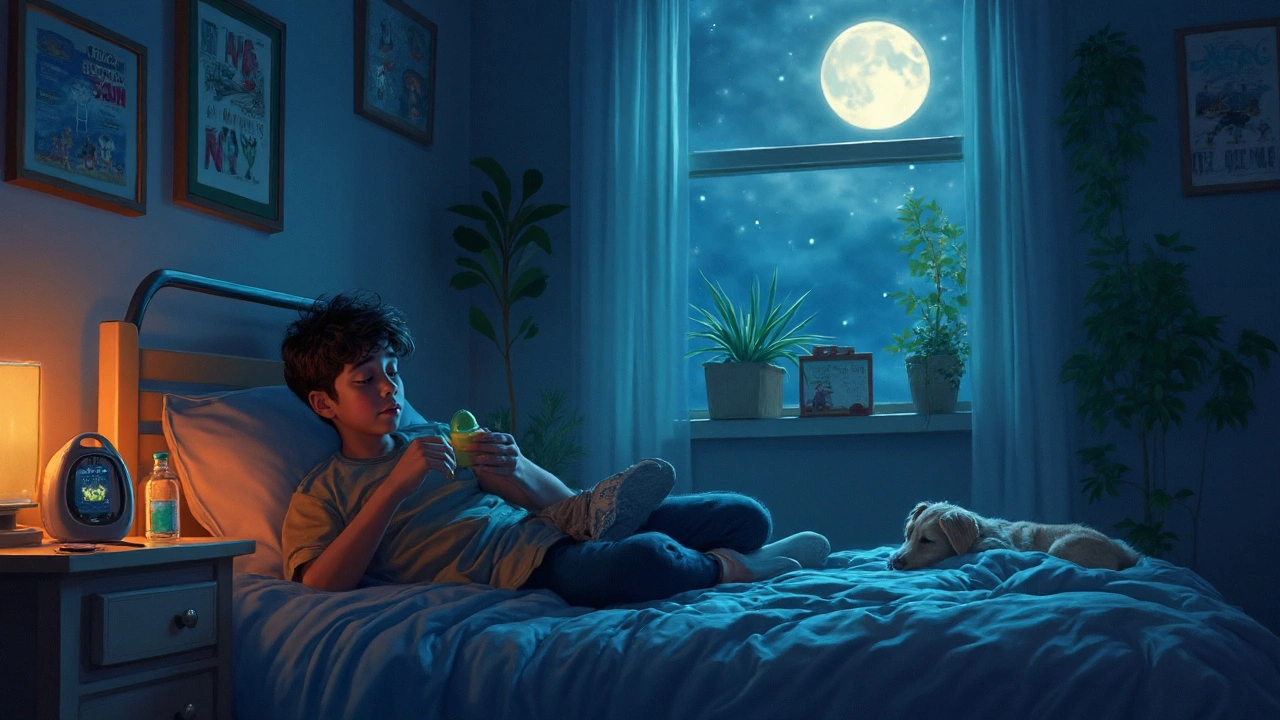
The Action Plan: Simple Steps to Screen, Talk, and Get the Right Help
Here are the jobs most families want to get done after a JIA diagnosis: understand the risk, spot symptoms early, choose practical supports, work with school, and know what to do in a crisis. Let’s turn that into a plan you can run this week.
Step 1: Make mental health part of routine care.
- Ask your rheumatology team to add a brief mood/anxiety screen at every visit. Many clinics already do this; if not, just ask.
- At home, check in once a week: “How was your pain? Your sleep? Your mood?” Keep it normal and brief.
Step 2: Use short tools you can repeat.
- PHQ-A for teens, and SCARED or GAD-7 for anxiety. PROMIS for pain, sleep, fatigue. Re-take during flares and after changes in meds or school routines.
- Track scores in the notes app on your phone. Trends matter more than single numbers.
Step 3: Talk in a way kids can hear.
- For younger kids: “Pain and feelings live in the same body. Both deserve care.”
- For teens: “Inflammation messes with sleep and focus. That makes mood worse. We’ll treat both-just like training both strength and flexibility.”
- Don’t dismiss fears; right-size them. “A flare is hard, and we have a plan for it.”
Step 4: Bring in the right pros.
- Psychologists or therapists trained in pediatric pain or CBT help kids replace unhelpful thoughts and build coping skills. Cochrane’s 2022 review shows psychological therapies reduce pain-related disability and anxiety in children with chronic pain.
- Occupational and physical therapists tailor activity pacing, joint protection, and safe movement that support mood and function.
- School counselor and 504/IEP team align supports: flexible PE, extra time, late starts after infusions, elevator passes, or reduced homework during flares.
Step 5: Understand medications and mood.
- Better disease control often improves mood and energy. Biologics and DMARDs that calm inflammation can help sleep and reduce pain interference. That indirect effect matters.
- Steroids can cause irritability, mood swings, and sleep problems, especially at higher doses. Ask about lowest effective dose and taper plans.
- If depression or anxiety stays moderate to severe despite therapy and routine changes, discuss medication options with your clinician. SSRIs are a common next step; your child’s team will weigh benefits, risks, and drug interactions.
Step 6: Prepare for flares and big life moments.
- Flares: switch to a “flare day schedule” (see below), notify school, and reduce demand while protecting sleep and gentle movement.
- Transitions: new school year, exams, sports tryouts, med changes. Put a plan on paper two weeks ahead.
Here’s a simple checklist you can screenshot and reuse:
- Weekly 3-part check: pain (0-10), sleep (good/ok/bad), mood (green/yellow/red).
- One small joy planned (friend hangout, craft, gaming with a buddy, outside time).
- Movement target most days (even 10 minutes counts).
- Bedtime and wake time within 60 minutes of usual.
- School contact point confirmed (email the counselor in week 1, check in again at week 4).
If safety is a concern at any point-statements about wanting to die, plans, or self-harm-treat it as an emergency. Stay with your child and contact local emergency services or a crisis line right away. Your medical team can help with next steps after immediate safety is secured.

Daily Playbook: Sleep, Movement, School, Therapy Skills, and Support That Stick
Let’s turn the science into day-to-day moves that help kids feel and function better. Think small, repeatable actions, not perfect days.
Sleep that supports healing:
- Keep bedtime and wake time steady; drift no more than an hour on weekends. Consistency beats perfection.
- Cool, dark, quiet room; warm shower or bath 60-90 minutes before bed can drop core temperature and ease joints.
- Reserve bed for sleep. If pain keeps them awake, try a 10-minute “worry write” and a heat pack. If awake after ~20 minutes, switch rooms for a short calm activity, then try again.
- Watch caffeine, late heavy meals, and late-day naps. If steroids are on board, ask about earlier dosing to protect nights.
Movement without backlash:
- On good days: aim for 30-45 minutes of low-impact activity-swimming, cycling, yoga, dance. It boosts mood and sleep and eases stiffness.
- On flare days: think “little and often.” Two or three 5-10 minute movement snacks: gentle range-of-motion, short walk, breathing plus stretches.
- Pacing formula: do the amount you can complete at a 4-6/10 effort, not 9/10. If you can’t talk in full sentences, slow down. Increase total weekly activity by about 10% when it feels stable.
CBT skills kids actually use:
- Thought swap: identify an unhelpful thought (“This pain will ruin my day”) and replace it with a truer, more helpful one (“This hurts, and I have tools that help”).
- Behavioral activation: schedule small, enjoyable, doable activities daily, even during flares. Mood often follows action.
- Exposure for fear of flares: gradually practice activities you avoid (PE class, stairs) with coaching, not all at once.
- Relaxation: box breathing (4-4-4-4), progressive muscle relaxation, or guided imagery at bedtime.
School setup that prevents crises:
- Start with a 504 plan (or IEP if needed). Include flexible deadlines during flares, permission to stand/stretch, elevator access, PE alternatives, and a test-makeup plan.
- Pick one point person (counselor or school nurse). Share a one-page health summary: diagnosis, meds schedule, known triggers, and flare plan.
- Use quiet breaks to prevent meltdowns. Two 10-minute breaks beat one 20-minute crash.
Friendships and identity matter:
- Encourage one in-person or virtual hangout a week. Small contact beats social isolation.
- Support roles outside “patient”: musician, gamer, mentor, coder, artist. Confidence in one area protects mood across the board.
- Peer groups (in person or online) with other kids who have JIA help normalize and reduce shame.
Medication plus mental health care works better than either alone when symptoms are moderate to severe. A pediatric therapist familiar with chronic illness can coordinate with the rheumatology team. Ask your clinic if they have integrated behavioral health; many do, and the American Academy of Pediatrics has pushed this integration hard since 2023.
Flare-day routine (print this):
- Step 1: Acknowledge: “Today’s a flare day. We’re switching to the flare plan.”
- Step 2: Pain control per doctor’s guidance; set a 2-hour recheck.
- Step 3: 5-10 minutes of gentle mobility after meds/heat. Repeat later.
- Step 4: Adjust school load; email the teacher using a saved template.
- Step 5: Nap cap: 20-40 minutes max before 3 p.m.
- Step 6: One “light joy” activity and one short social touchpoint (even a 10-minute chat).
- Step 7: Bed routine on schedule; no major decisions after 8 p.m.
Evidence snapshots to give you confidence:
- Rheumatology (Oxford) 2022: higher depression and anxiety prevalence in JIA vs peers; screen early, especially at flares.
- Cochrane 2022: psychological therapies reduce pain-related disability and anxiety in pediatric chronic pain.
- USPSTF 2022: screen teens for depression and kids 8-18 for anxiety.
- AAP 2023-2025: integrate behavioral health into pediatric care; annual depression screens age 12+.
juvenile arthritis care is at its best when we treat joints and feelings as one story. That’s not just kinder; it’s clinically smarter.
Mini-FAQ
- How do I tell normal sadness from depression? Sadness comes and goes. Depression hangs on 2+ weeks, saps interest, energy, and focus, and often changes sleep. Use a PHQ-A and watch function (school, friends, joy).
- Is anxiety always bad? No. A little anxiety can motivate. Problem anxiety blocks sleep, school, or social life. SCARED or GAD-7 helps sort it out.
- Could meds cause mood changes? Steroids can. New meds that help inflammation often improve mood by easing pain and fatigue. If mood worsens after a med change, tell your team.
- What about brain fog vs ADHD? Inflammation, poor sleep, and pain can mimic attention issues. Fix sleep and pain first; if focus stays poor, consider ADHD screening with the pediatrician.
- Can my kid still play sports? Usually yes, with adjustments. Low-impact sports are great; in contact sports, build a protection plan with PT/coach.
Checklists you can use today
10-minute mental health check (parents):
- 1 minute each on sleep, mood, pain interference, school stress.
- Ask: “What was one good thing today?”
- Agree on one small action for tomorrow.
Teacher quick brief (one page):
- Diagnosis in plain words; what a flare looks like; what helps.
- Top 3 accommodations; how to reach you and the nurse.
- Early warning signs at school: bathroom breaks, stiffness after sitting, fatigue after lunch.
Clinic prep script (teen-friendly):
- “My top concern this month is…”
- “On school nights I sleep about ___ hours; I wake up feeling ___.”
- “Pain stopped me from ___ this week.”
- “One thing that helps is ___; one thing that doesn’t is ___.”
Next steps / Troubleshooting
- Newly diagnosed family: Ask for integrated behavioral health at your rheum clinic. Start weekly mood/sleep checks now, not after a crisis.
- Teen won’t go to therapy: Offer choice (therapist A or B), format (in-person/virtual), and goals (sleep, pain coping, school stress). Teens engage when they have a say.
- Rural or limited access: Ask about telehealth CBT and PT. Many pediatric centers offer virtual visits since 2023. Your primary care clinic can run screens and coordinate meds.
- Frequent flares killing school rhythm: Build a flare pass with the counselor, switch to flexible deadlines, and schedule short movement blocks during the day.
- Caregiver burnout: You matter. Share the load, set a weekly hour off-duty, and consider a parent support group. Kids read your stress cues.
If you remember one thing: treat pain, sleep, and mood together. When one improves, the others usually start to follow. When they slip, revisit the basics, retake the screens, and adjust with your team. This approach is simple, realistic, and backed by what pediatric rheumatology and child psychology have learned over the past decade. I’ve seen it help families regain their days-one small, steady habit at a time.
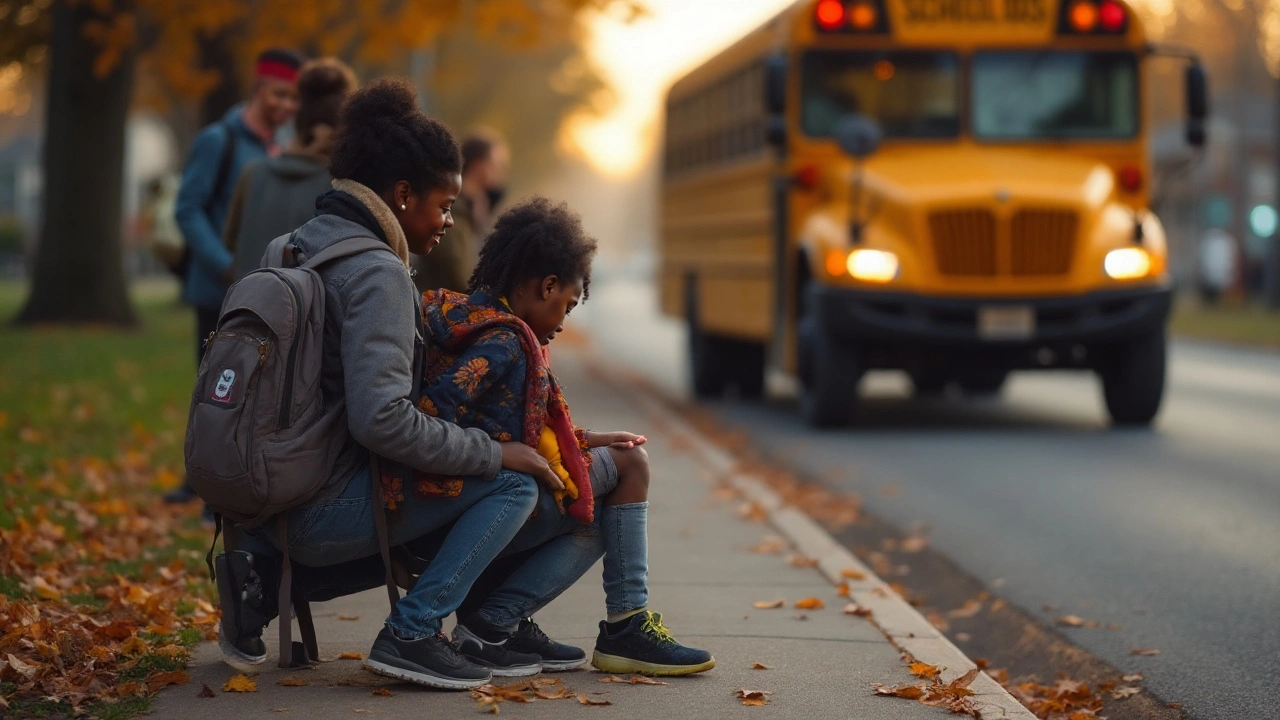
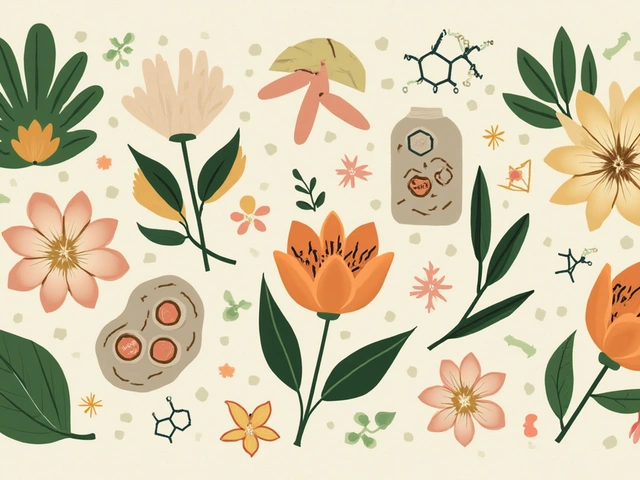
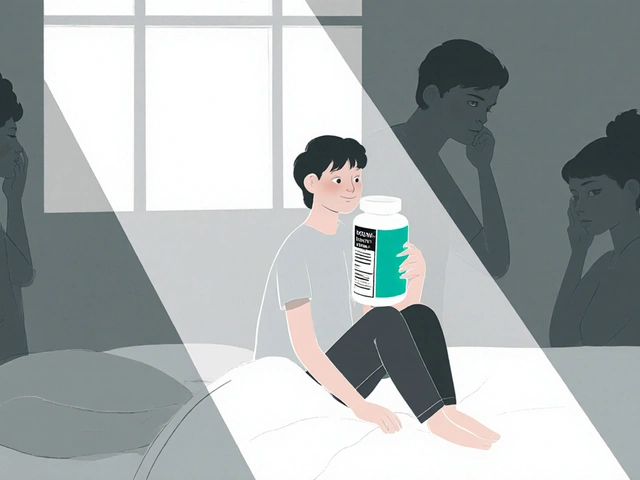
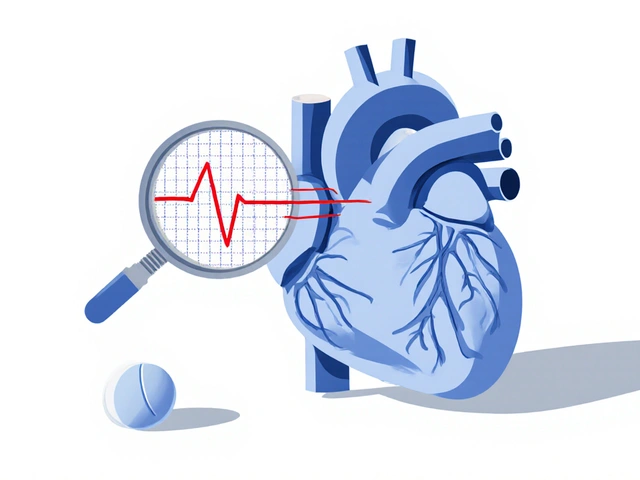

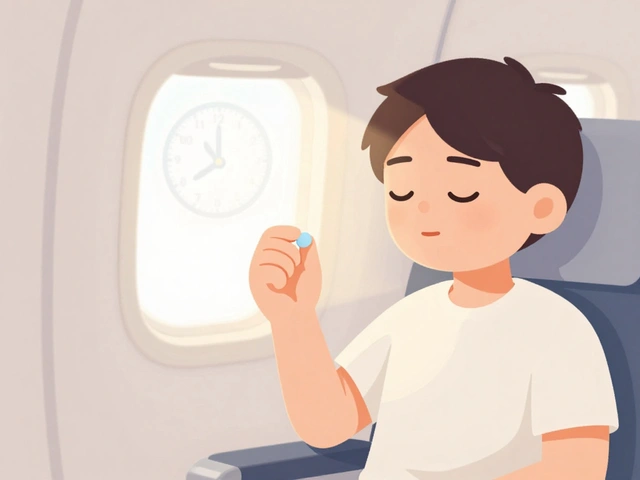
15 Comments
First and foremost, it is imperative to recognize that juvenile arthritis is not merely a peripheral musculoskeletal issue; it exerts a profound influence on neuroendocrine pathways that regulate mood and cognition. The literature unequivocally demonstrates a bidirectional causality wherein chronic nociception amplifies hypothalamic‑pituitary‑adrenal axis dysregulation, thereby predisposing the child to anxiety and depressive phenotypes. Moreover, the pharmacologic agents, particularly systemic glucocorticoids, possess well‑documented psychotropic side‑effects that can masquerade as primary psychiatric disorders. Consequently, any therapeutic regimen that neglects systematic psychosocial screening is fundamentally incomplete and ethically questionable. I would urge clinicians to integrate validated tools such as PHQ‑A and GAD‑7 at every quarterly visit, not merely as an afterthought. Finally, interdisciplinary collaboration with child psychologists should be entrenched as a standard of care, not an optional adjunct.
Absolutely love how you broke that down! 🙌 Parents can feel so overwhelmed, but having a concrete checklist with those screens makes it doable. Even a quick weekly “how’s your sleep?” chat can catch red flags early. Keep spreading the word-every family benefits when we normalise these conversations.
Here’s a pragmatic add‑on: teach kids a simple “mood‑temperature” scale (green, yellow, red) they can point to during daily check‑ins. It respects their autonomy while giving you actionable data. Pair that with a brief 2‑minute breathing exercise on red days, and you’ll notice a shift in emotional regulation. Also, ensure school staff have a one‑page summary of warning signs; they’re often the first to notice changes in class participation. Finally, remember to document trends in the EMR-patterns over time are more telling than isolated scores.
Wow, that really hits home. I can picture a teen staring at a hallway clock, counting down minutes until the next flare, feeling trapped. It’s like living in a drama where the script never pauses for a breath. Even the quiet moments feel heavy when the pain’s a constant understudy.
Guys, let’s get real – this stuff isn’t just “some pain”; it’s a daily battle that can wreck sleep, school, and social life. 🎯 Grab a sticky note, write down the three things that made you smile today – even a quick game or a funny meme – and stick it on the fridge. Tiny wins build massive confidence over time! Also, don’t forget to hydrate – water helps joints and mood. You’ve got this! 🙏
Exactly! 🎉 Celebrating those micro‑wins is essential. I’ve seen kids light up when they earn a “joy badge” for trying a new hobby, even if it’s just 5 minutes of drawing. Keep the momentum going and share your successes – the community thrives on each other’s progress! 🌟
When I first encountered the literature on juvenile idiopathic arthritis (JIA) and its psychosocial sequelae, I was struck by the sheer breadth of impact that extends far beyond the obvious joint inflammation. The chronic pain that accompanies flares often leads to a cascade of secondary effects: disrupted sleep architecture, which in turn lowers pain thresholds and impairs cognitive function, creating a vicious feedback loop. Children who are forced to miss school or limit participation in extracurricular activities may experience a profound identity crisis, feeling alienated from peers and questioning their self‑worth. This identity erosion can manifest as heightened anxiety, especially during transitional periods such as moving to a new school or preparing for college applications. Moreover, the pharmacologic armamentarium, while lifesaving, introduces its own set of neuropsychiatric challenges; corticosteroids, for instance, are notorious for provoking mood swings, irritability, and even psychotic symptoms in susceptible individuals. It is therefore critical for clinicians to employ a dual‑pronged approach that addresses both somatic disease activity and the accompanying mental health burden. Routine deployment of brief, validated screening instruments – the PHQ‑A for depressive symptoms, the SCARED or GAD‑7 for anxiety, and PROMIS scales for sleep and fatigue – allows for longitudinal monitoring and early identification of deteriorating trends. Integration of these tools into every rheumatology visit normalizes mental health discourse and reduces stigma. Equally important is the involvement of multidisciplinary teams: psychologists trained in cognitive‑behavioral therapy (CBT) for chronic pain, occupational therapists who can teach pacing strategies, and school counselors who can advocate for reasonable accommodations under Section 504 or an IEP. By creating a collaborative ecosystem, families can navigate flares with pre‑established action plans that include analgesic adjustments, gentle mobility exercises, and structured social engagement. The use of technology, such as mobile health apps that track pain‑mood‑sleep metrics, empowers adolescents to take ownership of their health data and facilitates real‑time communication with providers. Finally, one must not overlook caregiver strain; parents and siblings also experience heightened stress, and their well‑being directly influences the child’s recovery trajectory. Providing support groups for families, offering respite services, and encouraging self‑care practices among caregivers are essential components of a comprehensive care model. In sum, the convergence of vigilant screening, interdisciplinary collaboration, and proactive planning forms the cornerstone of a holistic strategy that mitigates the mental health ramifications of juvenile arthritis, ultimately fostering resilience and improving quality of life for these young patients.
Permit me to offer a measured critique: while the exposition is commendably exhaustive, it occasionally succumbs to gratuitous verbosity, risking reader fatigue. Moreover, the reliance on numerous acronyms, though technically accurate, may alienate lay caregivers unfamiliar with rheumatologic nomenclature. A judicious balance between scholarly rigor and accessible prose would serve the intended audience more effectively. Nonetheless, the emphasis on interdisciplinary coordination aligns with contemporary best‑practice guidelines. I recommend the inclusion of a concise executive summary to facilitate rapid assimilation of key actionable points.
Great summary; short and sweet.
Listen up – ignoring mental health in JIA is a dereliction of duty, not an oversight. The data is crystal clear: anxiety and depression rates skyrocket during flares, and steroids only make it worse. What’s your plan? Implement routine PHQ‑A and GAD‑7 screenings at every visit, and make sure the therapist is on board from day one. Parents need a concrete action list, not a vague “talk to your doctor.” Let’s get serious about holistic care before more kids suffer in silence.
Hey folks, just wanted to chime in with a quick reminder that consistency beats intensity when it comes to routines. Even a simple nightly check‑in about pain, sleep, and mood can spot trends before they blow up. It also builds trust between the kid and the caregiver – they feel heard. Don’t underestimate the power of a shared calendar for medication times and school accommodations; it keeps everyone on the same page. And remember, a little humor can lighten the mood on tough days – a smile is still a victory.
Philosophically speaking, the body and mind are not separate vessels but a single vessel navigating stormy seas; treating one without the other invites capsizing. Simplicity in assessment leads to clarity in intervention. Hence, minimal yet regular screens are the compass.
Picture this: a kid waking up, battling a cloud of joint pain, yet still managing to sketch a sunrise in their notebook. That spark of creativity can be the linchpin in their emotional resilience. Encourage any outlet – music, art, gaming – because it rewires the brain’s reward pathways away from despair. When the pain persists, those vibrant hobbies become anchors, pulling them back from the edge. So, celebrate every doodle, chord, or high score as a triumph over the invisible battle.
Yo, this whole “mental health” talk sounds like a Western fluff piece. In real life, kids gotta toughen up, not sit on couches whinin’ about feelings. If you’re in the U.S., do you even know how many families can’t afford fancy therapists? We need real solutions, not just cute checklists. Stop peddling that “keep smiling” junk and give them grit.
Alright, so everyone’s patting themselves on the back for posting checklists. But honestly, most parents won’t even read past the first bullet. People love hype, but when it comes to a chronic condition like JIA, we need concrete, actionable steps, not a laundry list of buzzwords. Also, why are we always pushing CBT? It’s not a silver bullet. Let’s cut the fluff and focus on what actually moves the needle – medication adherence, school accommodations, real support systems.